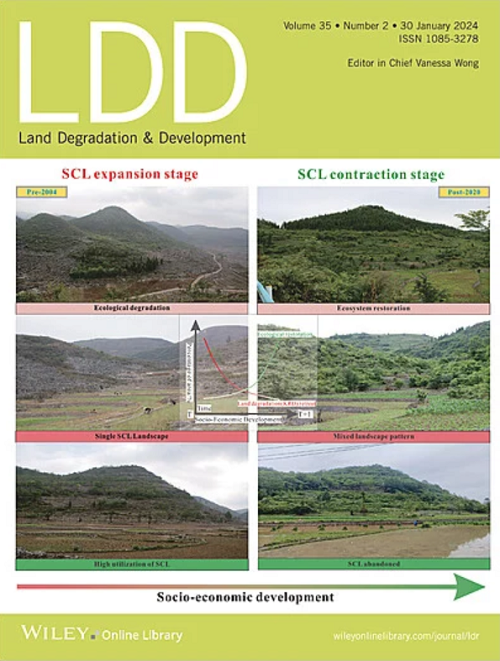Assessing Thermal Activity and Ecological Response in Coal-Waste Dumps: A Case Study of Chorzów Dump
IF 3.6
2区 农林科学
Q2 ENVIRONMENTAL SCIENCES
引用次数: 0
Abstract
The Upper Silesian Coal Basin faces ongoing challenges with self-heating in coal waste dumps, a problem that leads to dangerous and unpredictable subsurface fires. This study investigates the thermal dynamics and vegetation response in a coal waste dump, expanding on previous research that links waste temperatures with plant health and distribution. The study area—a small, old coal waste dump located in a highly urbanized area—was subjected to comprehensive environmental monitoring focused on various fire determinants. The findings confirm that coal waste dumps, regardless of size and complexity, experience similar fire determinants, with vegetation colonization progressing in bands starting with pioneer species in less heat-affected areas. As the distance from the fire zone increases, plant density and diversity improve, indicating a recovery in thermally stabilized zones. The study also demonstrates the repeatability of relationships between subsurface temperatures and vegetation status across different coal waste dumps, supporting the use of plants as indicators of underground fires. Elevated subsurface temperatures in thermally active zones lead to clear ‘dying’ and ‘death’ zones, where excessive heat damages plant roots, causing die-offs. In contrast, areas with moderate temperatures allow vegetation growth, even in winter, due to favourable root-zone conditions. The study highlights the need for improved monitoring and fire mitigation strategies to address thermal activity in reclaimed sites, especially those with limited historical data. These insights are crucial for preventing similar issues in the future and minimizing the long-term impacts on surrounding communities and ecosystems.煤矸石堆积场热活动与生态响应评价——以Chorzów堆积场为例
上西里西亚煤盆地面临着煤矸石堆自热的持续挑战,这一问题导致危险和不可预测的地下火灾。本研究调查了一个煤矸石堆的热动力学和植被响应,扩展了以前的研究,将废渣温度与植物健康和分布联系起来。研究区是一个位于高度城市化地区的小型旧煤矸石堆,对其进行了全面的环境监测,重点关注各种火灾因素。研究结果证实,无论大小和复杂程度如何,煤矸石堆都经历了类似的火灾决定因素,在热影响较小的地区,植被的定植从先锋物种开始,以带的方式进行。随着离火区距离的增加,植物密度和多样性增加,表明热稳定区恢复。该研究还证明了不同煤矸石堆地下温度和植被状态之间关系的可重复性,支持将植物作为地下火灾的指标。在热活动区,地下温度升高会导致明显的“死亡”和“死亡”区,在那里,过热会损害植物的根,导致死亡。相比之下,温度适中的地区由于有利的根区条件,即使在冬季也能使植被生长。该研究强调需要改进监测和防火策略,以解决回收场地的热活动问题,特别是那些历史数据有限的场地。这些见解对于防止未来发生类似问题以及最大限度地减少对周围社区和生态系统的长期影响至关重要。
本文章由计算机程序翻译,如有差异,请以英文原文为准。
求助全文
约1分钟内获得全文
求助全文
来源期刊

Land Degradation & Development
农林科学-环境科学
CiteScore
7.70
自引率
8.50%
发文量
379
审稿时长
5.5 months
期刊介绍:
Land Degradation & Development is an international journal which seeks to promote rational study of the recognition, monitoring, control and rehabilitation of degradation in terrestrial environments. The journal focuses on:
- what land degradation is;
- what causes land degradation;
- the impacts of land degradation
- the scale of land degradation;
- the history, current status or future trends of land degradation;
- avoidance, mitigation and control of land degradation;
- remedial actions to rehabilitate or restore degraded land;
- sustainable land management.
 求助内容:
求助内容: 应助结果提醒方式:
应助结果提醒方式:


